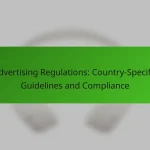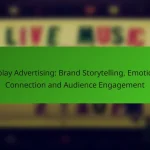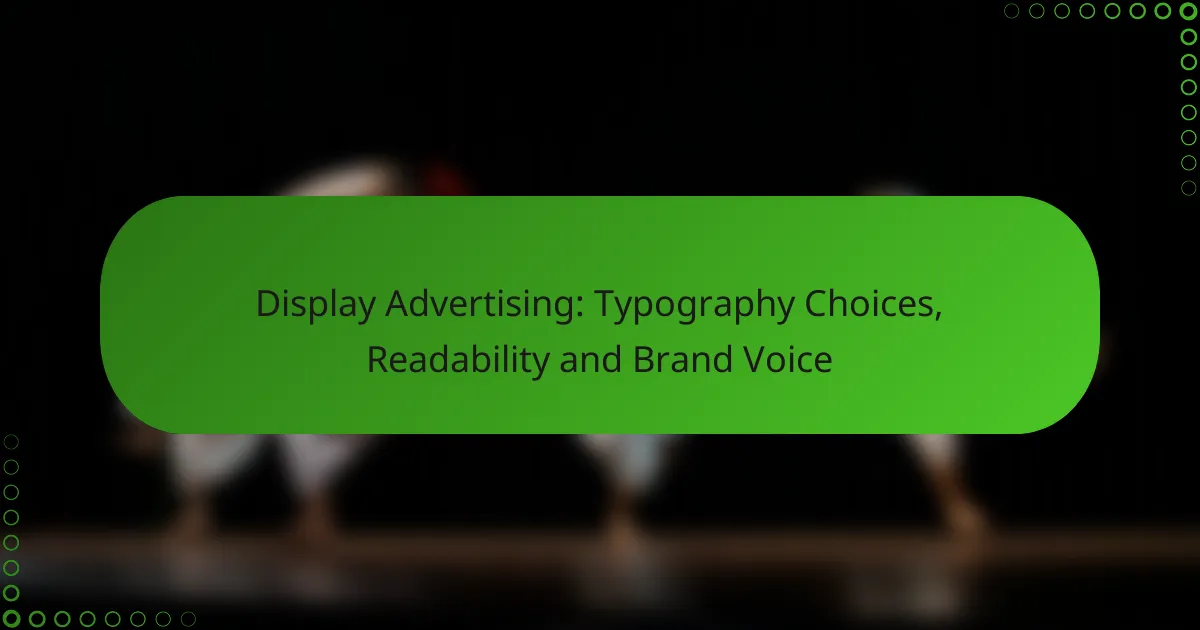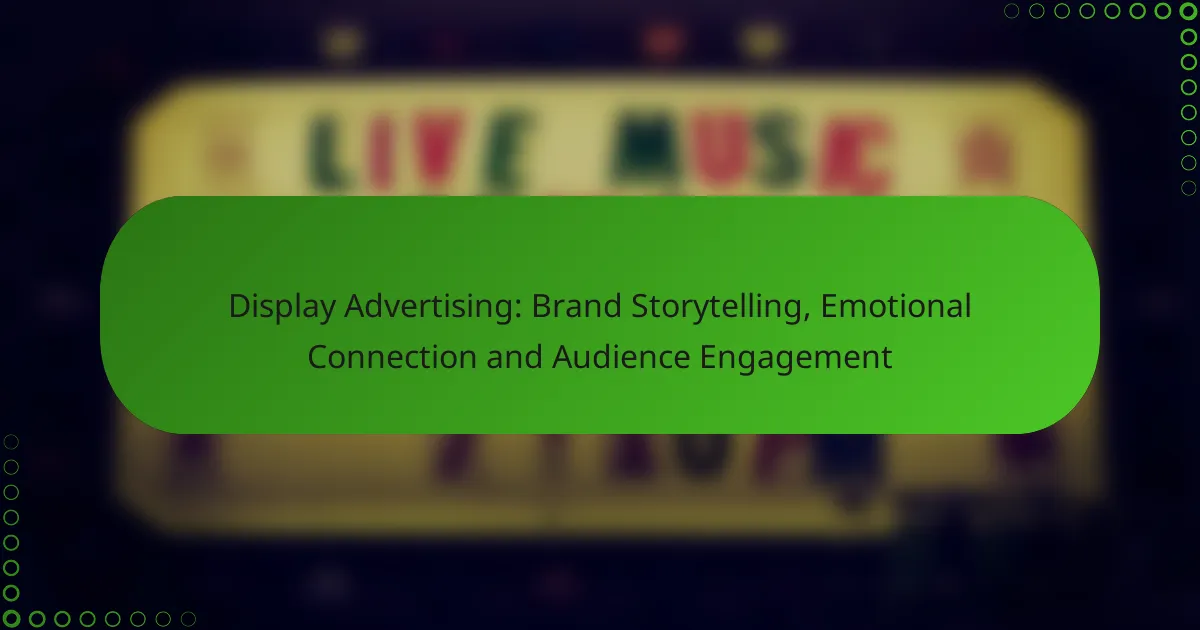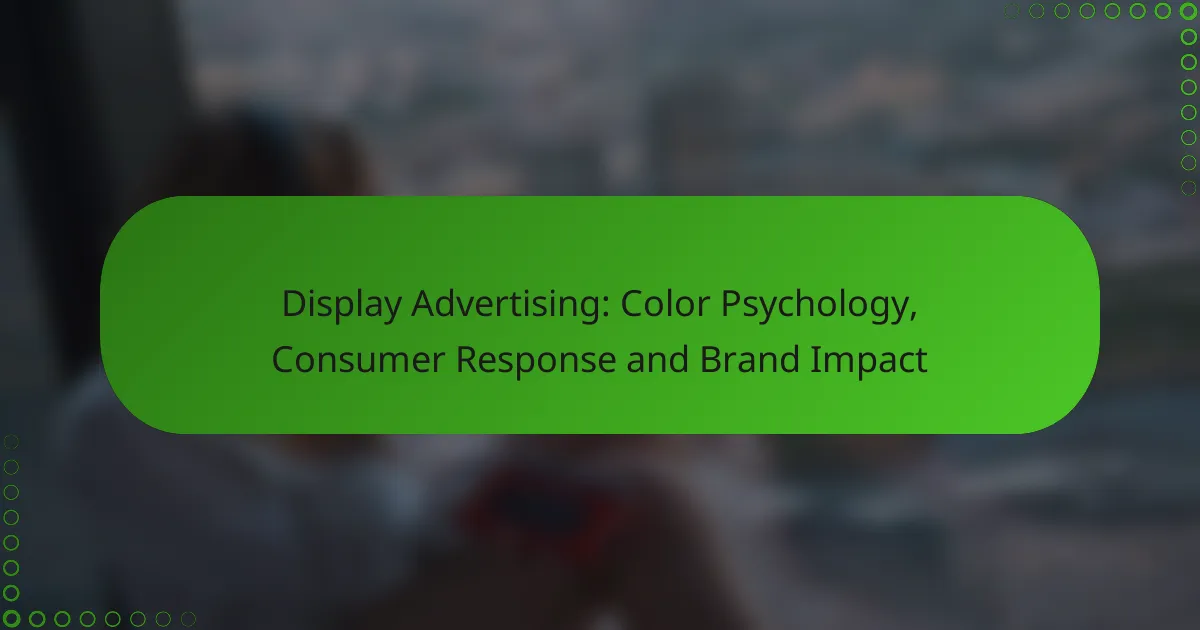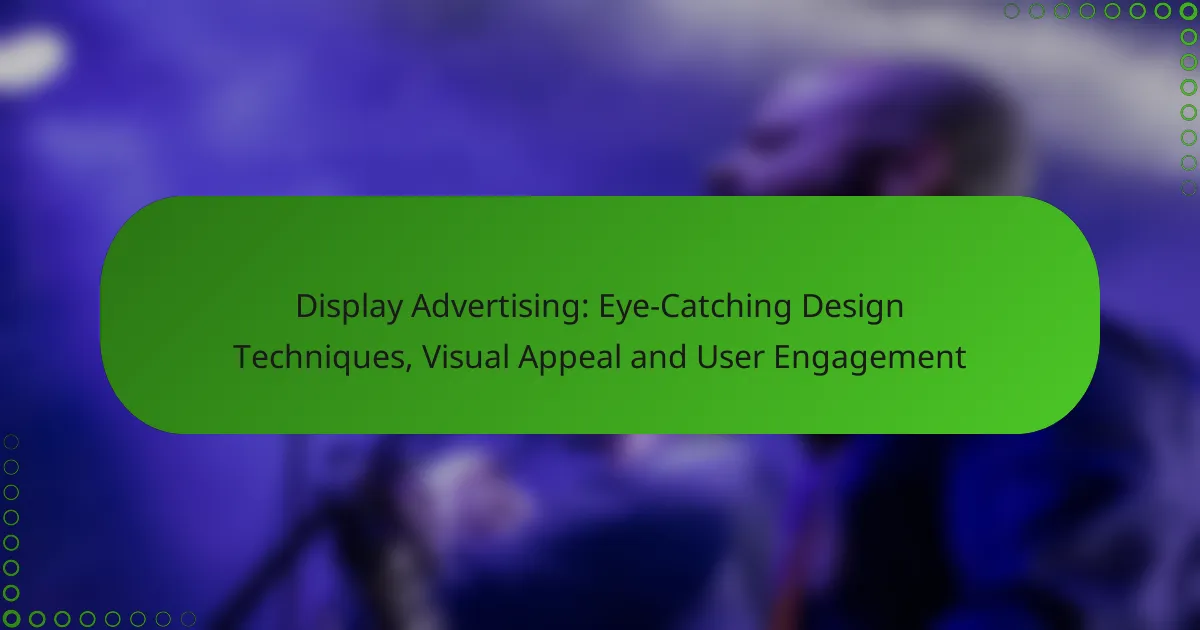Typography choices are essential in display advertising, as they directly impact readability, user engagement, and brand perception. By selecting the right fonts and styles, advertisers can enhance their message and attract attention, which is crucial for improving conversion rates. Effective typography not only ensures clear communication but also reinforces brand voice, aligning with brand identity and engaging the target audience.
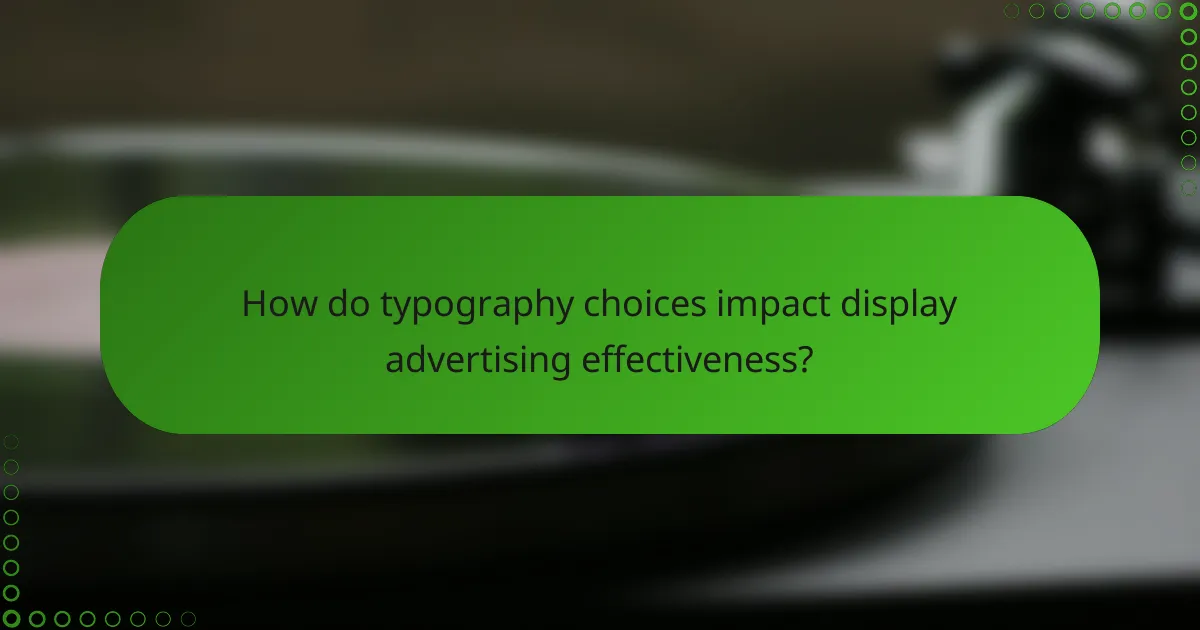
How do typography choices impact display advertising effectiveness?
Typography choices significantly influence display advertising effectiveness by affecting readability, user engagement, and brand perception. Selecting the right fonts and styles can enhance the overall message and draw attention, ultimately impacting conversion rates.
Influence on user engagement
Typography plays a crucial role in user engagement by guiding the viewer’s eye and making content easier to digest. Clear, legible fonts can lead to longer time spent on ads, while overly complex or decorative fonts may deter users. A good rule of thumb is to use sans-serif fonts for digital ads, as they are generally easier to read on screens.
Additionally, font size and spacing can affect how users interact with the ad. Larger fonts can attract attention, while appropriate line spacing improves readability. Aim for a font size between 16-24 pixels for body text to maintain clarity.
Effect on brand perception
The typography used in display advertising directly impacts how consumers perceive a brand. Consistent use of specific fonts can create a strong brand identity, making it easier for consumers to recognize and remember the brand. For instance, luxury brands often use elegant serif fonts to convey sophistication, while tech companies may opt for modern sans-serif fonts to suggest innovation.
Moreover, typography can evoke emotions and set the tone for the brand message. Brands should choose fonts that align with their values and target audience. For example, playful fonts may appeal to a younger demographic, while traditional fonts may resonate more with an older audience.
Case studies from major brands
Several major brands have successfully leveraged typography in their display advertising campaigns. For example, Apple consistently uses clean, minimalist fonts that reflect their brand ethos of simplicity and elegance. This choice reinforces their identity and appeals to their tech-savvy audience.
Another example is Coca-Cola, which utilizes its iconic script font in advertisements to evoke nostalgia and familiarity. This consistent use of typography strengthens brand recognition and emotional connection with consumers. Analyzing these case studies can provide valuable insights into effective typography strategies for display advertising.

What are the best typography practices for readability in display ads?
The best typography practices for readability in display ads focus on clear communication and visual appeal. Effective font choices, appropriate sizes, and sufficient spacing enhance user engagement and ensure the brand message is easily understood.
Font size and line spacing recommendations
For optimal readability, font sizes should generally range from 16 to 24 pixels for body text, depending on the viewing distance and device. Line spacing, or leading, should be set at 1.5 times the font size to create sufficient white space, making the text easier to scan.
Avoid using excessively small fonts, as they can strain the eyes and lead to disengagement. Testing different sizes and spacings can help determine what works best for your specific audience and ad format.
Contrast and color usage
High contrast between text and background is crucial for readability. Aim for a contrast ratio of at least 4.5:1 for body text to ensure legibility across various devices and lighting conditions. Dark text on a light background or vice versa typically works best.
Color choices should align with your brand voice while ensuring clarity. Avoid using overly bright or clashing colors that can distract from the message. Using a limited color palette can help maintain focus and enhance brand recognition.
Examples of readable fonts
Some widely recognized fonts that enhance readability in display ads include Arial, Helvetica, and Open Sans. These sans-serif fonts are clean and modern, making them suitable for various advertising contexts.
For a more distinctive brand voice, consider using fonts like Roboto or Lato, which maintain clarity while adding personality. Always test your font choices in real ad scenarios to ensure they resonate with your target audience and maintain readability across different platforms.
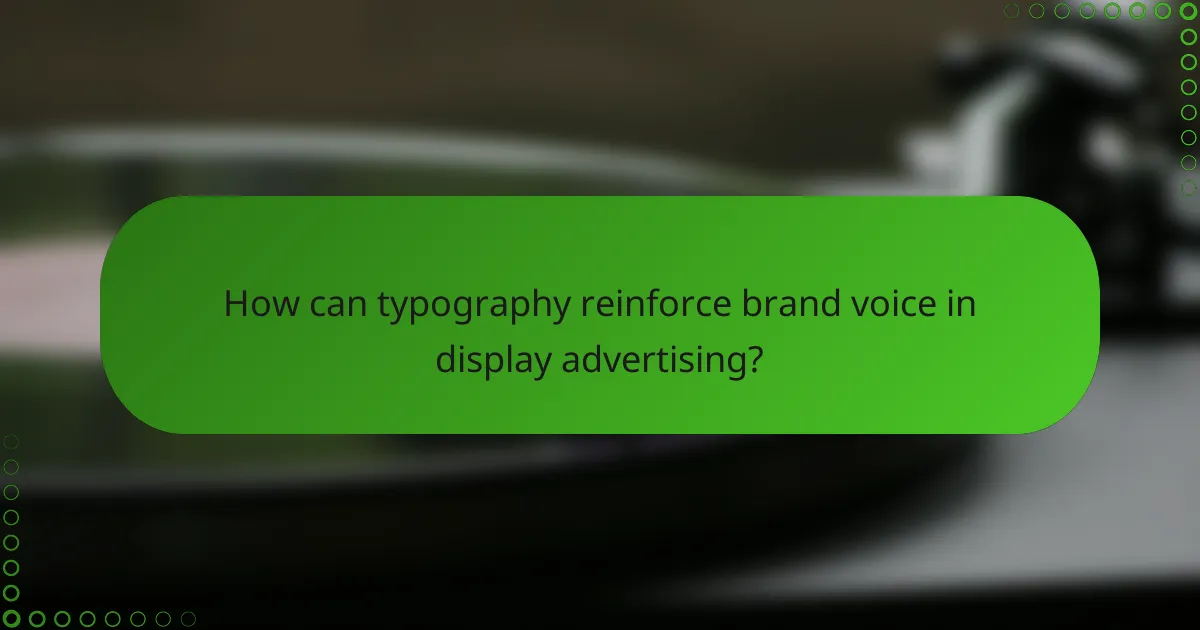
How can typography reinforce brand voice in display advertising?
Typography plays a crucial role in reinforcing brand voice in display advertising by conveying personality and tone through font choices, sizes, and styles. Effective typography aligns with brand identity, enhances readability, and engages the target audience, ultimately influencing their perception and response to the advertisement.
Alignment with brand identity
Choosing the right typography is essential for aligning with brand identity. Fonts can evoke emotions and associations; for instance, a modern sans-serif font may convey innovation, while a classic serif font might suggest tradition. Brands should select typefaces that reflect their core values and resonate with their audience.
Consistency in typography across various advertising platforms strengthens brand recognition. Using the same font styles, weights, and sizes helps create a cohesive visual identity, making the brand more memorable to consumers.
Case studies of successful brand typography
Several brands have effectively utilized typography to enhance their advertising campaigns. For example, Coca-Cola’s iconic script font is instantly recognizable and evokes feelings of nostalgia and happiness. This consistent use of typography reinforces their brand voice across all marketing materials.
Another example is Airbnb, which uses a clean, modern typeface that reflects its commitment to simplicity and user-friendliness. Their typography choices help convey trust and accessibility, aligning perfectly with their brand message.
Typography as a storytelling tool
Typography can serve as a powerful storytelling tool in display advertising. The choice of font can set the mood and context, guiding the audience’s emotional response. For instance, a bold, heavy font can create urgency, while a light, airy font may evoke calmness.
Incorporating typographic hierarchy, such as varying font sizes and weights, can help emphasize key messages and guide the viewer’s eye through the advertisement. This strategic use of typography not only enhances readability but also reinforces the narrative the brand wishes to convey.

What criteria should be considered when selecting typography for display ads?
When selecting typography for display ads, consider readability, brand voice, and the target audience’s preferences. Effective typography enhances engagement and conveys the intended message clearly, making it crucial to choose styles that align with both the ad’s context and the brand’s identity.
Target audience preferences
Understanding the preferences of your target audience is essential for effective typography in display ads. Different demographics may respond better to specific font styles; for instance, younger audiences may prefer modern, sans-serif fonts, while older audiences might favor traditional serif fonts.
Conducting surveys or analyzing existing data can help identify which typography resonates with your audience. Additionally, consider cultural factors that may influence font perception, as certain styles may evoke different feelings in various regions.
Ad placement and context
The placement and context of your display ad significantly impact typography choices. For ads displayed on mobile devices, opt for larger, bolder fonts to ensure readability on smaller screens. Conversely, desktop ads may allow for more intricate typography, as users typically have more screen space.
Consider the surrounding content and the platform where the ad will appear. For example, an ad on a news website may benefit from a more professional font, while an ad on a social media platform can leverage playful and trendy typography to attract attention.

How does typography vary across different display advertising platforms?
Typography in display advertising varies significantly across platforms, influencing readability and brand voice. Each platform has its own guidelines that dictate font choices, sizes, and styles, which can affect how ads are perceived by audiences.
Typography guidelines for Google Ads
Google Ads emphasizes clarity and simplicity in typography. Recommended font sizes typically range from 12 to 16 pixels for body text, ensuring legibility across devices. Sans-serif fonts like Arial and Roboto are preferred for their clean appearance.
When creating ads, avoid overly decorative fonts that can distract from the message. It’s essential to maintain a consistent font style throughout the campaign to reinforce brand identity. Google also suggests using bold text for emphasis, but sparingly to avoid clutter.
Typography standards for Facebook Ads
Facebook Ads prioritize engaging typography that complements visual elements. The platform recommends using font sizes between 14 and 18 pixels for body text, allowing for easy reading on mobile devices. Fonts like Helvetica and Open Sans are commonly used for their modern look.
It’s crucial to balance text and imagery, as Facebook limits the amount of text in ads to 20% of the image area. This encourages advertisers to use concise messaging and strong visuals. Consistency in typography across ads helps in building brand recognition and trust among users.
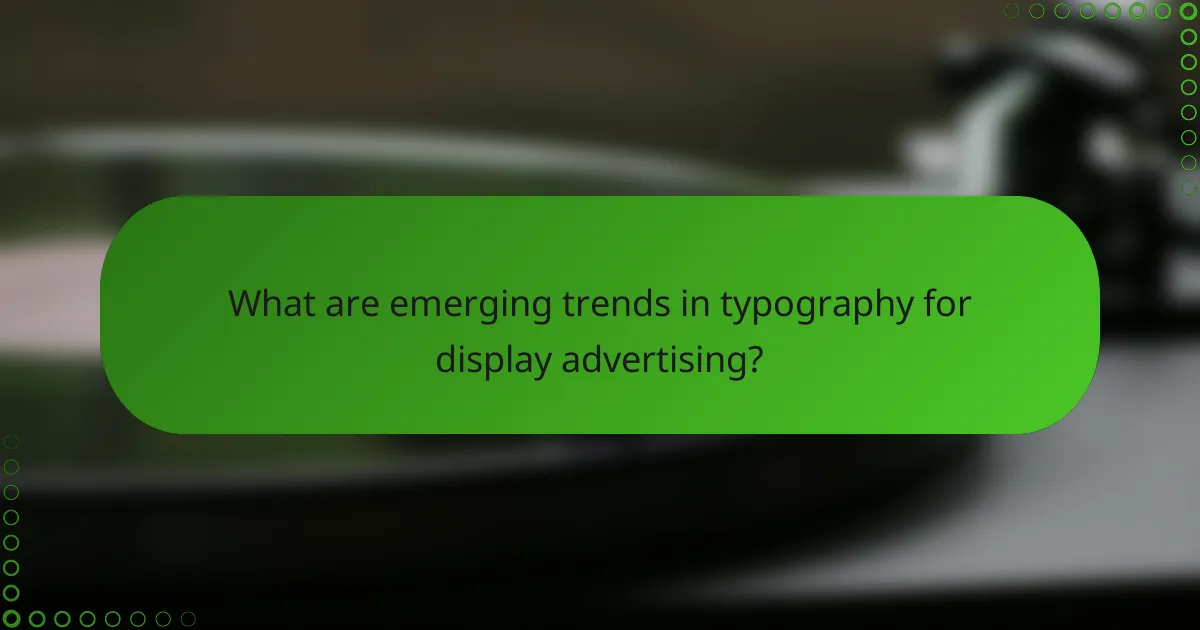
What are emerging trends in typography for display advertising?
Emerging trends in typography for display advertising focus on enhancing visual appeal and improving user engagement. Key developments include the use of variable fonts, custom typefaces, and animated typography, all aimed at creating a more dynamic and memorable brand experience.
Variable fonts and responsive typography
Variable fonts allow for multiple styles and weights within a single font file, providing flexibility in design. This adaptability enables advertisers to create responsive typography that adjusts seamlessly across different devices and screen sizes, ensuring readability and aesthetic consistency.
When implementing variable fonts, consider the visual hierarchy and legibility at various sizes. Aim for a balance between creativity and clarity, as overly complex designs can detract from the message. A good practice is to test font variations in real-world scenarios to gauge effectiveness.
Use of custom typefaces
Custom typefaces can significantly enhance brand identity by providing a unique visual representation. Brands often invest in bespoke fonts to differentiate themselves and convey specific personality traits, making their advertising more recognizable and impactful.
When choosing a custom typeface, ensure it aligns with your brand voice and target audience. Consider the emotional response it evokes and how it complements other design elements. Additionally, be mindful of licensing costs and usage rights to avoid potential legal issues.
Integration of typography with animation
Integrating typography with animation can create engaging and interactive display ads that capture attention. Animated text can emphasize key messages, guide user focus, and enhance storytelling, making the advertisement more compelling.
To effectively use animated typography, keep animations subtle and purposeful. Avoid overly complex movements that can distract from the message. A good rule of thumb is to limit animations to a few seconds and ensure they align with the overall pacing of the ad content.
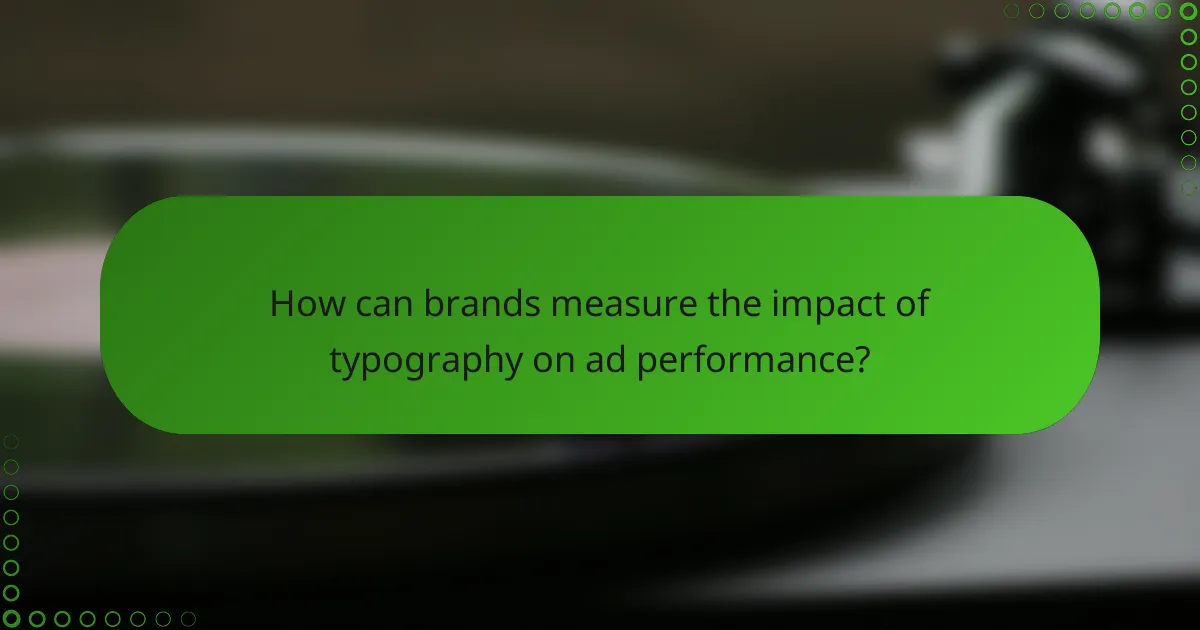
How can brands measure the impact of typography on ad performance?
Brands can measure the impact of typography on ad performance by analyzing engagement metrics such as click-through rates (CTR), conversion rates, and user feedback. By using various analytics tools, they can determine which typographic choices resonate best with their audience and drive desired actions.
Analytics tools for tracking engagement
Analytics tools are essential for tracking how typography influences user engagement with ads. Platforms like Google Analytics and Adobe Analytics provide insights into user behavior, allowing brands to assess metrics such as time spent on ads and interaction rates. These tools can help identify which fonts and styles lead to higher engagement.
When using analytics, focus on key performance indicators (KPIs) like CTR and bounce rates. For example, a well-chosen font might increase CTR by several percentage points, while a poorly selected typeface could lead to higher bounce rates. Regularly reviewing these metrics can help brands refine their typography choices.
Additionally, A/B testing is a practical method to evaluate typography’s impact. By creating two versions of an ad with different fonts, brands can compare performance directly. This approach provides clear data on which typography better captures audience attention and drives conversions.
